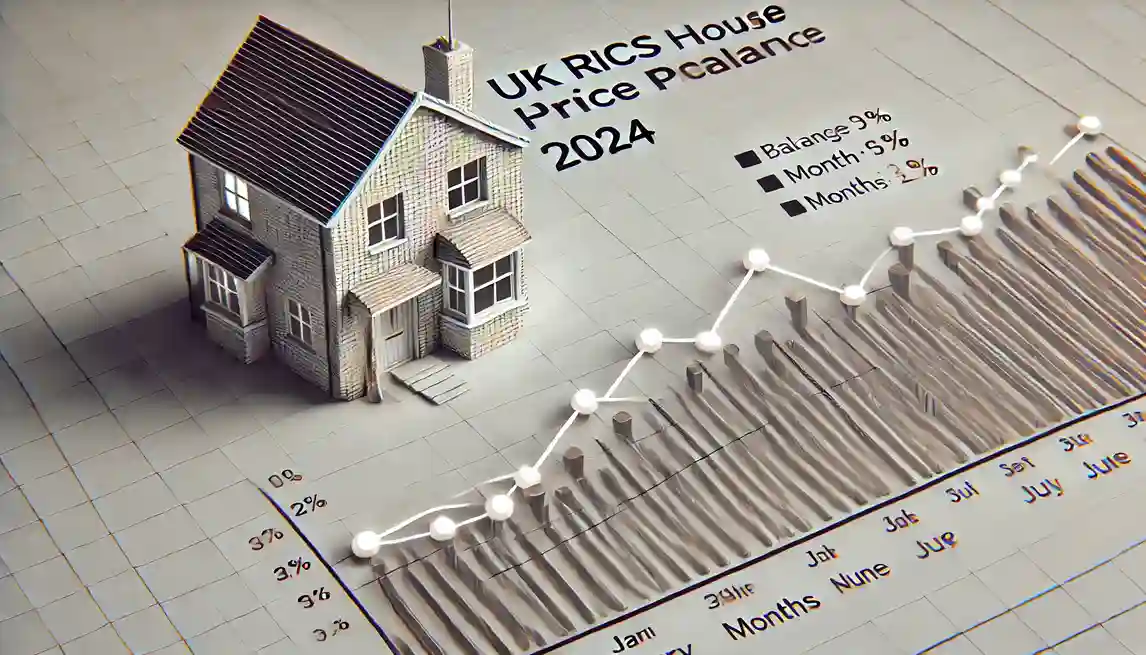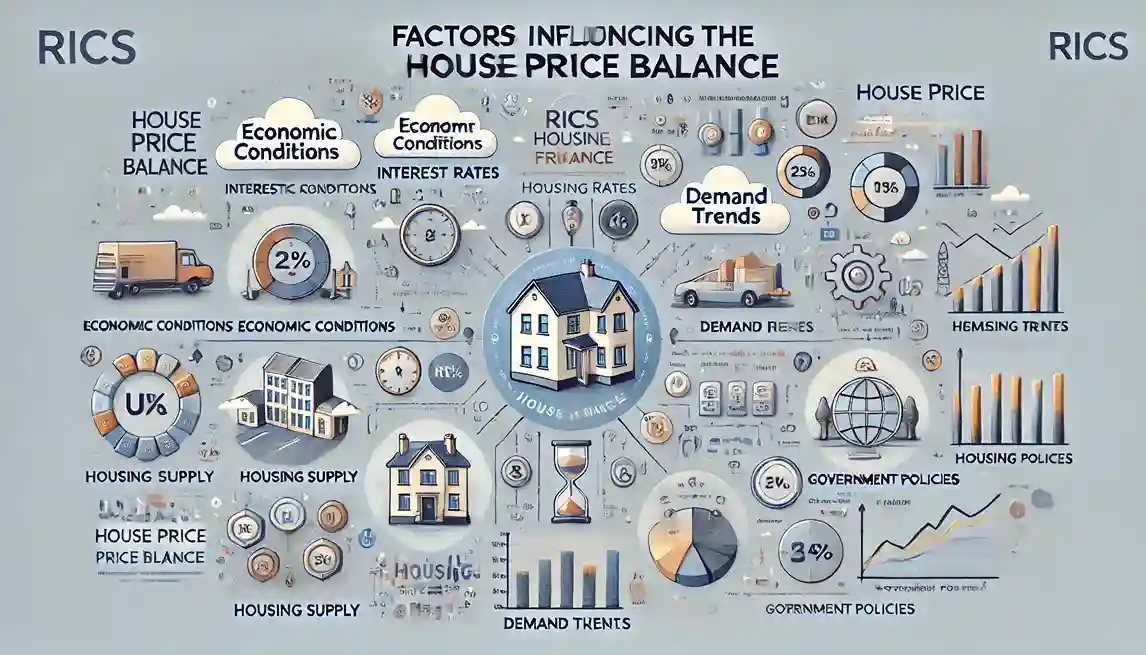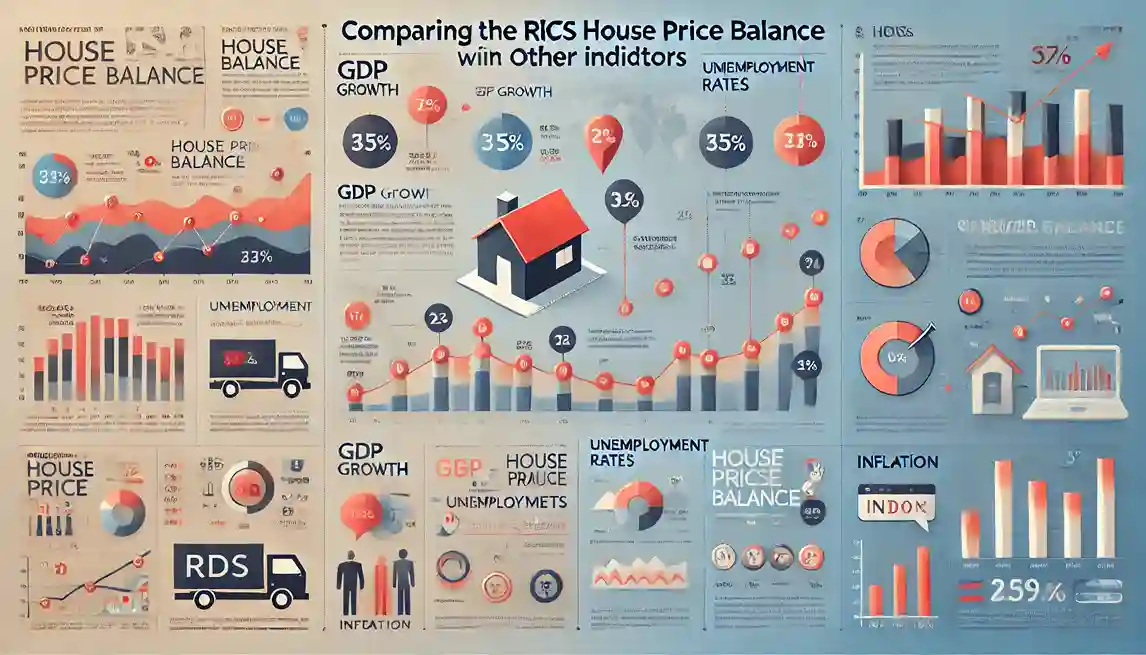The UK RICS House Price Balance is an essential indicator for anyone interested in the UK’s housing market. Whether you’re a homeowner, a prospective buyer, or a real estate investor, understanding this metric can provide valuable insights into market trends and future movements. This article delves into the intricacies of the RICS House Price Balance, offering a comprehensive overview of its significance, calculation, historical context, and implications for various stakeholders.
What is the RICS House Price Balance?
The RICS (Royal Institution of Chartered Surveyors) House Price Balance is a monthly measure that gauges the percentage of surveyors reporting a rise in house prices versus those reporting a fall. This balance provides a snapshot of market sentiment and can serve as an early indicator of housing market trends.

The balance is calculated by subtracting the percentage of surveyors reporting price declines from those reporting price increases. A positive balance indicates that more surveyors are seeing price rises than falls, suggesting a strong or strengthening market. Conversely, a negative balance implies a weakening market with more surveyors reporting price declines.
How is the RICS House Price Balance Calculated?
The RICS House Price Balance is derived from a monthly survey conducted among RICS members. These surveyors provide their assessment of house price changes in their respective areas over the past three months. The balance is then calculated by subtracting the percentage of surveyors reporting price decreases from those reporting price increases.
For example, if 30% of surveyors report a rise in house prices and 10% report a fall, the RICS House Price Balance would be +20%. This simple yet effective methodology ensures that the balance reflects real-time market sentiment, offering a valuable tool for market analysis.
Historical Context and Trends
Understanding the historical context of the RICS House Price Balance helps put current data into perspective. Over the years, this metric has shown significant fluctuations, reflecting various economic cycles, policy changes, and external shocks.
During the 2008 financial crisis, the RICS House Price Balance plummeted as house prices fell sharply across the UK. The balance remained negative for an extended period, highlighting the severity of the market downturn. However, as the economy recovered, the balance gradually turned positive, indicating a rebound in house prices.
Recent Developments in the RICS House Price Balance
In recent years, the UK housing market has experienced notable changes, influenced by factors such as Brexit, the COVID-19 pandemic, and government policies. The RICS House Price Balance has mirrored these developments, providing a real-time gauge of market sentiment.
For instance, during the initial phase of the pandemic, the balance turned negative as lockdown measures and economic uncertainty dampened market activity. However, government interventions, such as the Stamp Duty holiday, fueled a surge in demand, leading to a positive balance in subsequent months.
Factors Influencing the RICS House Price Balance

Several factors can influence the RICS House Price Balance, making it a dynamic and multifaceted indicator. These factors include economic conditions, interest rates, government policies, and consumer confidence.
Economic conditions play a crucial role, as a strong economy typically supports higher house prices, while a weak economy can lead to price declines. Interest rates are another key factor; lower rates make borrowing cheaper, boosting demand and prices, while higher rates have the opposite effect.
Government policies, such as tax incentives or regulations, can also impact the housing market and, consequently, the RICS House Price Balance. Finally, consumer confidence influences buying and selling decisions, affecting market sentiment and price trends.
Implications for Homeowners
For homeowners, the RICS House Price Balance offers valuable insights into the health of the housing market. A positive balance suggests that house prices are generally rising, potentially increasing the value of their properties. This can be particularly reassuring for those looking to sell or remortgage.
However, a negative balance may indicate declining prices, which could affect the value of their home. In such cases, homeowners might need to adjust their expectations or consider waiting for a market recovery before selling.
Implications for Buyers
Prospective buyers can use the RICS House Price Balance to gauge market conditions and make informed decisions. A positive balance might signal a competitive market with rising prices, prompting buyers to act quickly to secure their desired property.
Conversely, a negative balance could suggest a buyer’s market, with more properties available at potentially lower prices. Buyers might take advantage of this situation to negotiate better deals or wait for further price declines.
Implications for Investors
Real estate investors closely monitor the RICS House Price Balance to identify market trends and opportunities. A positive balance indicates a robust market, potentially offering capital appreciation and rental income prospects.
On the other hand, a negative balance may highlight areas of risk, prompting investors to be cautious or consider diversifying their portfolios. By staying informed about the RICS House Price Balance, investors can make strategic decisions to maximize their returns.
Comparing the RICS House Price Balance with Other Indicators

While the RICS House Price Balance is a valuable tool, it is essential to consider it alongside other housing market indicators for a comprehensive analysis. These indicators include the Nationwide House Price Index, the Halifax House Price Index, and the UK House Price Index.
Each of these indices has its methodology and focus, providing different perspectives on the housing market. By comparing the RICS House Price Balance with these indicators, analysts can gain a more nuanced understanding of market trends and dynamics.
The Role of the RICS in the Housing Market
The Royal Institution of Chartered Surveyors (RICS) plays a vital role in the UK housing market. As a professional body, RICS sets standards for the valuation, management, and development of land, real estate, construction, and infrastructure.
RICS members adhere to strict codes of practice, ensuring that their assessments and valuations are reliable and accurate. The RICS House Price Balance, therefore, reflects the informed opinions of qualified professionals, making it a trusted indicator for market analysis.
Challenges and Limitations of the RICS House Price Balance
While the RICS House Price Balance is a valuable metric, it is not without its limitations. One challenge is that it relies on subjective assessments from surveyors, which can introduce biases or inconsistencies.
Additionally, the balance is a lagging indicator, reflecting past changes rather than predicting future trends. It is also influenced by regional variations, as different areas of the UK may experience divergent price trends.
Despite these limitations, the RICS House Price Balance remains a crucial tool for understanding market sentiment and trends. By considering its findings alongside other indicators and data, stakeholders can form a more comprehensive view of the housing market.
Future Outlook for the RICS House Price Balance
Looking ahead, the RICS House Price Balance will continue to be a key barometer of the UK housing market. As the market evolves, influenced by economic conditions, policy changes, and consumer behavior, this metric will provide valuable insights into emerging trends and shifts.

Stakeholders should stay informed about the RICS House Price Balance and other housing market indicators to navigate the complexities of the market effectively. By doing so, they can make informed decisions, whether buying, selling, or investing in real estate.
Conclusion
The UK RICS House Price Balance is a critical indicator for understanding the health and trends of the housing market. By measuring the sentiment of surveyors across the country, it provides a real-time snapshot of price movements and market dynamics. Homeowners, buyers, and investors can all benefit from understanding this metric, as it offers valuable insights into market conditions and future prospects. While it is not without its limitations, the RICS House Price Balance remains a trusted and reliable tool for market analysis. By staying informed and considering its findings alongside other indicators, stakeholders can make more informed decisions and navigate the complexities of the UK housing market.
FAQs
- What does a positive RICS House Price Balance indicate?
A positive RICS House Price Balance indicates that more surveyors are reporting an increase in house prices than those reporting a decrease, suggesting a strengthening housing market. - How often is the RICS House Price Balance updated?
The RICS House Price Balance is updated monthly, providing a regular and timely measure of market sentiment. - Can the RICS House Price Balance predict future house prices?
While the RICS House Price Balance reflects past and current market sentiment, it is not a predictive tool. It should be used alongside other indicators for a comprehensive market analysis. - How does the RICS House Price Balance compare to other house price indices?
The RICS House Price Balance offers a unique perspective based on surveyors’ assessments, while other indices like the Nationwide and Halifax House Price Indices use transaction data. Comparing these indicators can provide a fuller picture of market trends. - Why is the RICS House Price Balance important for investors?
Investors use the RICS House Price Balance to gauge market conditions and identify opportunities or risks. It helps them make informed decisions about buying, selling, or holding properties.
